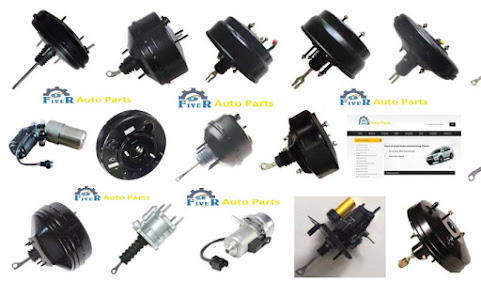Know Your Car Brakes Well
One of the most important safety features of automobile is braking system available to the driver. And as a result, car manufacturers have devoted extensive years to refine and develop the best braking system to make the car as well as the driver safe. To enhance the new braking system, power assisted brakes was designed and introduced.
The basics of the automotive braking system
are the same regardless of whether you are considering power or non-power, disc
or drum so let's consider that first. When you push on the brake pedal, you are
forcing a plunger into a cylinder (called the master cylinder) filled with
brake fluid. Brake fluid is an oily liquid that has features of corrosion and
temperature resistance that make it especially suitable for brake systems.
This system uses the power of the engine as
well as energy from the battery to increase the break efficiency. Most modern
cars have disc brakes on the front wheels, and some have disc brakes on all
four wheels. This is the part of the brake system that does the actual work of
stopping the car.
A moving car has a certain amount of
kinetic energy, and in order to stop it, the brakes have to remove this energy
from the car. Each time you stop your car, your brakes convert the kinetic
energy to heat generated by the friction between the pads and the disc. Most
car disc brakes have vents that pump air through the disc to provide cooling.
There are three basic components making up
disc brakes: the rotor, the brake pads, and the calipers. The rotor is a
circular metal disc that is fixed behind your tire to the hub. Next are the calipers,
it is as simple as a circus performer who can spin a dinner plate on the tip of
his finger. To stop the plate from spinning, he uses his fingers to clamp down
on the plate. The rotor is similar to the plate, and the fingers act similarly
to the calipers. At the tips of the fingers would be the brake pads, made of a
softer material than the rotor to keep it free from surface damage.
Among the different types disc brake system
is the single piston, floating caliper, are most commonly used today. As the
name implies there is one piston per wheel, located at the inside end of the caliper.
The calliper is considered floating as it straddles the rotor and each brake
pad is applied equally to each side of the rotor. The advantage with today's
disc brake system is that they come along with anti-lock system, which prevents
the tires from 'locking up'.
To enhance the efficiency of the braking
system a new system was designed called power brake system. It is also called
'power assisted 'brakes. This system uses the power of engine and also battery
to increase the efficiency of braking system. Earlier power brakes were not
required as drum brakes were used.
The most important element of the power
brake system is Brake Booster.
It is mounted at the back side of the engine compartment on the driver's side
of the car. Brake booster is placed on firewall behind the master cylinder. The
Power Brake Booster
along with master cylinder is connected with brake pedal. The main purpose of
the brake booster is to amplify the available foot pressure applied to the brake
pedal. As a consequence, a large vehicle can be stopped with little foot
pressure. Engine vacuum is used as power for the booster.
Check valve is another important element of
power brake. This valve is connected (with the help of a rubber hose) the
engine and acts as a one-way valve that allows vacuum to enter the booster but
does not let it escape. If the engine is stopped or a leak forms in a vacuum
hose, the check valve ensures that air does not enter the vacuum booster.
It is always better to know the in-n-out of
the car, so that in case of any emergency or trouble you can help yourselves as
well as your car.
Read Also: Are Your VW Brake Boosters Doing Their Job?




Comments
Post a Comment